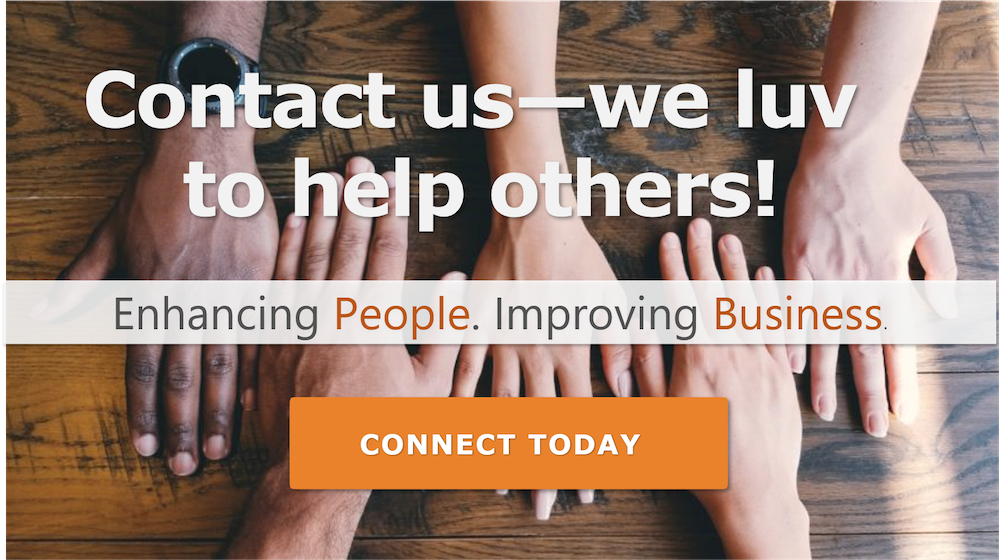Can you hear us now? Equal Employment, which began in 1965, has gradually (very gradually) transformed into Diversity, Equity and Inclusion (DEI). In the early years, employees gathered round the training table and listened to the "voice of reason" review the anti-discrimination handout as they read along.
Companies considered it due diligence and proudly announced their discrimination-free workforce without ever addressing race bias or getting feedback from their employees. It was a poor attempt, at best, to diversify.
It took a few decades for people to realize that companies may be boasting about their "cultural awareness," but are no more diverse today than 20 years ago.
Once that realization took hold and coupled with current events, a new movement swept across corporate America. Corporations large and small are finding new ways to bring a diverse culture into the workplace.
Transformation is a process that begins by rolling the ball uphill until you reach a plateau, once there, it only takes a nudge to get the ball rolling down the other side picking up momentum as it goes.
The feminist movement in the early 1960s is a perfect example of this process. Once in motion, it was nudged into full swing by the cigarette ad with the slogan, “You’ve come a long way baby.” The ad depicted well-dressed, classy women smoking Virginia Slim cigarettes and the traditional role for women was changed forever.
"You've come a long way, baby" easily applies to today's view of diversity as the definition of equity and inclusion is expanded and embraced.
Diversity: the art of thinking independently together.
~ Malcolm Forbes
Loud and Clear
The recent scramble by companies to incorporate best DEI practices follows directly on the heels of current social movements. For instance, the death of George Floyd significantly increased the creation of (DEI) jobs that function for the sole purpose of creating a DEI workforce.
We live in the information age where political movements and social injustices are disseminated and advanced on social media, specifically by the use of hashtags such as, #MeToo, #BlackLivesMatter and #BackTheBlue.
Companies that acted on the growing demand for DEI also found that investing in improving diversity gets an excellent return on investment (ROI) giving them a competitive edge.
A 2015 article by McKinsey & Company supports this theory with research that shows businesses that rank highest for racial and ethnic diversity are more likely to have financial returns above industry medians.
And they had the same results in the 2018 article, Delivering through Diversity. In that article, McKinsey & Company outlined how their latest research reinforces the link between diversity and a company's increase in financial performance.
There are many ways that diversity can bring value to a company. However, companies see the most significant impact in these four aspects of performance:
1. Better talent acquisition - focusing on ethnically diverse hiring significantly enlarges the talent pool, which mitigates the cost of talent shortages.
2. Increased employee satisfaction - McKinsey research has found that a sincerely diverse workplace boosts personal satisfaction for women and minority groups. In contrast, employee satisfaction is unchanged when a company's effort is superficial.
3. Better alignment with a large customer base - When a company is aligned with a globalized customer base, it can improve customer relationships, increase loyalty and strengthen its brand.
4. Better decision-making and corporate problem-solving - More diversity means more people bringing diverse solutions, opinions and ideas.
When a company does Diversity, Equity and Inclusion right, the result is a clear win on everyone's side.
"Diversity is about all of us & about us having to figure out how to walk through this world together."
~ Jacqueline Woodson
That's What You Get. This is How it's Done.
Companies that genuinely want a diverse workplace often don't have a clue where to start. They have DEI woven into their mission statements, have publicly announced their efforts, and maybe even put together a committee to focus on DEI solutions.
But now what? Easy…Start where you're at.
Invest in recruitment and give current employees a reason to stay. Promote and hire to create diverse middle management.
When you want to change things for the better, you must first understand the problem then figure out a solution. Here's how to do just that:
• Employee Resource Groups - Employee resource groups are great options for discovering what isn't working. Led by employees, these groups offer a safe space to discuss experiences and challenges in the workplace.
They can share feelings and discuss the impact of these positive and negative experiences. But the information shouldn't be left on the table. An executive participant should ensure that the concerns are voiced to the upper management and heard at the highest levels of the organization.
• Examine Your Hiring Process - Make sure your application is gender-neutral and doesn't skew too far to one side. One possible solution is to use they/them pronouns when possible.
Check the required skills and education section for accuracy. Often a person will have the necessary skills without the education. Do the core requirements still apply? Does the job really require each of the stated skills? If so, can they be taught?
Standardize the interview questions. Unconscious biases can make you harshly critique the answers of candidates you can't identify with.
• Management Training - You've probably heard this before. People leave managers, not companies. It's not the CEO of a company that makes the most difference in the workplace. It's the middle management.
They are the driving force behind the day-to-day operations and are most likely to see or know about injustices. It's up to the manager to ensure every employee feels respected and safe. A good manager nurtures the workplace culture and acts as an advocate for all employees.
Training should include leadership training, so managers become good communicators. It should also include:
-
-
How to create a culture of inclusion
-
Microaggressions and bias
-
How to deliver compassionate and corrective feedback
-
How to amplify and represent the voices of people of color
-
See how other organizations foster diversity in the workplace.
BCBSMI discusses mentoring in the workplace check it out here ►
Companies and Employees BenefitWhen employees mentor each other, everyone wins.
Organizations are composed of people, and people respond to authentic communication. When people see their suggestions unfolding, they feel valued and respected.
Do you want to know how best to address diversity and inclusion problems? Ask your employees. They are the closest to the problem, so they are also closest to the solution.
Hundreds of organizations support their employees through The Ulliance Life Advisor Employee Assistance Program (EAP). Investing in the right EAP to support your employees before, during and after they face adverse events will help them and help you. Visit www.ulliance.com, or call 866-648-8326.
When you partner with Ulliance, our Life Advisor Consultants are always just a phone call away to teach ways to enhance your work/life balance and increase your happiness. The Ulliance Life Advisor Employee Assistance Program can help employees and employers come closer to a state of total well-being.
Investing in the right EAP or Wellness Program to support your employees will help them and help you. Visit www.ulliance.com, or call 866-648-8326.
The Ulliance Employee Assistance Program can address the
following issues:
• Stress about work or job performance
• Crisis in the workplace
• Conflict resolution at work or in one’s personal life
• Marital or relationship problems
• Child or elder care concerns
• Financial worries
• Mental health problems
• Alcohol/substance abuse
• Grief
• Interpersonal conflicts
• AND MORE!
References
Giving Everyone a Voice: Best Practices for Inclusion. (2021). Retrieved from Equality Institute: https://www.theequalityinstitute.com/equality-insights-blog/giving-everyone-a-voice-best-practices-for-inclusion
Levine, S. (2021, June 10). A Guide to Attracting and Hiring Diverse Talent. Retrieved from Hone: https://honehq.com/blog/a-guide-to-attracting-and-hiring-diverse-talent/
Levine, S. (2021, June 10). Amplifying Diverse Voices at Work: 3 Ways Businesses Can Give Employees a Voice. Retrieved from Hone: https://honehq.com/blog/amplifying-diverse-voices-at-work/
Papay, M. (2019, Aug 6). Harnessing The Power Of Inclusive Voice In Your Organization. Retrieved from Forbes: https://www.forbes.com/sites/forbessanfranciscocouncil/2019/08/06/harnessing-the-power-of-inclusive-voice-in-your-organization/?sh=72be19e71a3f
Writer, W. S. (2021, July 8). Listening to Every Employee Voice: Honoring Diversity, Equity, and Inclusion. Retrieved from Workday: https://blog.workday.com/en-us/2021/listening-every-employee-voice-honoring-diversity-equity-inclusion.html



